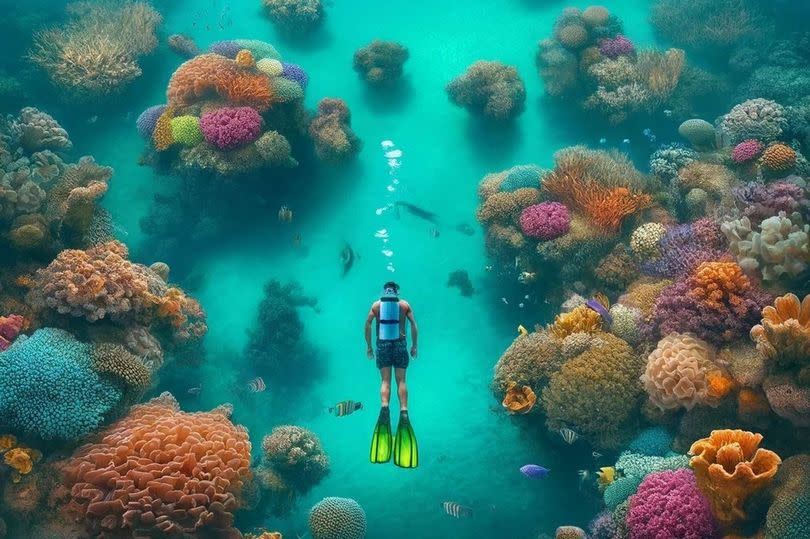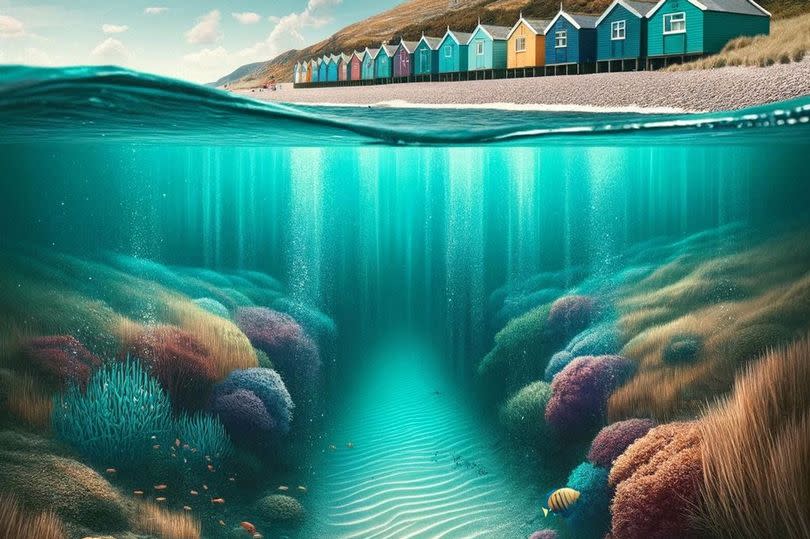Coral reefs, renowned for their vibrant biodiversity, are under threat. With Australia’s iconic Great Barrier Reef currently experiencing its fifth mass bleaching event in eight years, the focus has shifted to global restoration projects aimed at preserving these underwater ecosystems.
As global sea temperatures continue to rise scientists believe once-temperate waters may play a vital role in preserving tropical coral reefs. It may seem like a stretch but there is speculation that the coastal waters off Wales could be “breeding grounds” for replacement reefs in the future.
Ocean Science and Technology (OST), a leading information hub for the marine and offshore sector, examines some of the world’s most significant rescue efforts currently underway. Developing technology to create and replant coral reefs, OST suggests that if current warming trends continue, the UK could host reef nurseries in the coming years.
READ MORE: ’90s entertainment complex that hosted bowling alleys and birthday parties is about to be torn down
READ MORE: The Northern Lights will shine over Great Britain for the second night in a row
To demonstrate this possibility, OST carried out a theoretical exercise to show how parts of the Welsh coast might look if coral farming were to occur. Using AI, they developed images of popular coastal areas in Anglesey, Gwynedd, Ceredigion, and Pembrokeshire as they might look in 2074.
Current conservation efforts for reefs range from the cultivation of climate-resilient coral to the development of seaweed farms that can capture carbon and mitigate ocean acidification. Australia is a hub of innovation in this area with inventions such as the RangerBot that patrols reefs to neutralize threats without harming the surrounding habitats, reports NorthWalesLive.
Another innovative approach is the Modular Artificial Reef Structure (MARS) developed in Melbourne. This system facilitates coral transplantation using modular ceramic components – a material that mimics the natural formation of reefs. The effectiveness of the MARS system has already been demonstrated in deep sea environments in the Maldives.

OST said: “The variety of technologies being used suggests that coral reefs coming to unpredictable shores is not a far-fetched idea. 3D printing is underway in Melbourne helping coral reefs grow new colonies through printing techniques. “
“Meanwhile, in Queensland, researchers have created RangerBots that can identify reef health by creating 3D maps. They can be used to track changes in ecosystems enabling scientists to respond faster than ever before.”


Coral production is already happening in Britain – albeit in laboratories. The University of Derby may be 75 miles from the sea but it is pioneering techniques that enable coral to reproduce in aquariums.
It’s amazing that the UK has its own amazing coral reefs. Located in the colder depths of the seas west of Scotland, these cold water reefs are on a par with their balmy tropical equivalents. Full of Lophelia pertusa it is the only type of coral that forms reefs in these British waters. The area they cover stretches an impressive 100 square kilometers.


Interestingly, some newly formed coral colonies are less than five years old and appear to be continuously growing. However most of these Scottish reefs are based on time honour. A statement from The Wildlife Trusts reads: “Lophelia reefs grow very slowly – only between 4mm-25mm per year. So the largest reefs are probably thousands of years old and some recorded growing in plow marks icebergs formed during the last ice age.”
Although Britain has such wonders our waters have a long way to go before they are even remotely classified as tropical. Over the previous four decades sea surface temperatures around the world had increased by 0.6C.
Furthermore there are signs that this warming trend is progressing. OST data showed projections of ocean temperatures warming by 0.2C globally – and between 0.2C-0.3C in Europe – every five years.




After that, by 2074, we could be looking at a 2C-3C rise in value in UK waters. Considering the average end of summer sea surface temperatures peak at 15.4C in Porthmadog, Gwynedd, currently even after such an increase, the local seas would not reach 20C, which is considered the threshold for tropical waters .
Last year the Met Office reported a marine heatwave in which UK waters reached temperatures of up to 5C above average. At Ynys Môn Marine Zoo daily monitoring of the waters of the Straits shows that coastal temperatures are approaching tropical levels.
Frankie Hobro, owner and director of the zoo, said: “In August to September we were getting water temperatures of 18C-19C and sometimes 20C. This is what you would expect in the Mediterranean.
“As the sea continues to warm, we have to turn on our water tank coolers earlier in the year to cool our native marine species. The coolers used to come on in late May or even June. Now they are being launched as early as April.”
The idea of the Welsh fringes acting as nurseries for tropical corals is not as far-fetched as it once was. Although OST generated images of coral farming in Wales are highly distorted they provide a glimpse into the future according to experts.